Storytelling
Why Data Storytelling Is Essential for the Modern PR Strategy
I’m not going to start this blog post with something hyperbolic and edgy like “press releases are dead.” The truth about the marketing industry is that things are nuanced, and very rarely does a tenet apply 100% across the board for all brands in all industries.
What I do hope to explain, though, is how we need to consider the different types of digital PR when crafting marketing strategies.
“Traditional” public relations deals with crafting press releases and pitching contacts at media outlets about prominent updates with the company, like new products, a significant anniversary, an impressive acquisition, etc.
And there’s nothing wrong with this approach! However, relying solely on this PR strategy means overlooking significant opportunities to get your brand name out there. “Modern” digital PR was developed in order to start a more active, valuable and ongoing conversation between brands and the public, and to do that, you need compelling content.
Cue data storytelling.
The Rise of Data Storytelling
Your customers/clients (and potential customers/clients) care about more than just the inner goings on of your company. If you only dish out content about your organization’s updates, you’re not showing you truly understand what actually matters to your audience. They care about a lot more—and you’ll be able to do that as data supports storytelling by bringing credibility and reliability to the message your PR content is putting out.
All types of storytelling can possibly be extremely effective, but the fun part about data storytelling in particular is that a story based on a new dataset is inherently unique. You can have a ton of internal data that is boring on the surface, but lying underneath are insights that speak to interesting trends, consumer preferences, new societal norms, or perspectives not often considered.
If you’re able to identify the core of what makes that data interesting and present it in a visually compelling way, you can make a huge PR splash with your exclusive analysis.
Big brands can get away with doing it even without the visually compelling components. Take Spotify, for example.
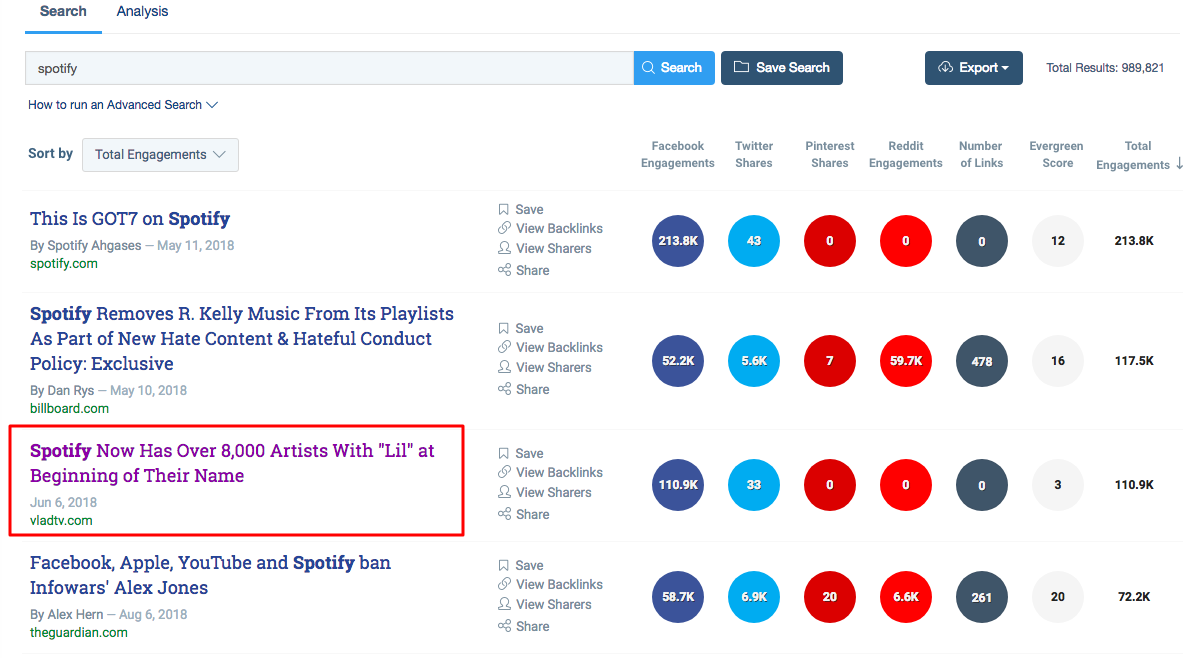
When looking at the most shared content on BuzzSumo that mentions “Spotify” in the headline in the last year, we see that an article about light-hearted Spotify data that earned 110k+ Facebook engagements. This media hit is sandwiched between two more traditional news pieces, but it made the Top 5 because it’s fun, original, and speaks to trends in music, a topic the brand should know plenty about.
More and more brands are tapping into their own data to tell stories about their industries and offer a fresh perspective that no one else can provide.
Note: For those of us who aren’t the Spotifys of the world, we can still participate in this type of content strategy. We just have to put in more legwork (AKA, more thought into design, presentation, pitching, etc.).
Another great strategy is releasing “reports” on a yearly basis that encapsulate any trends or preferences in your vertical.
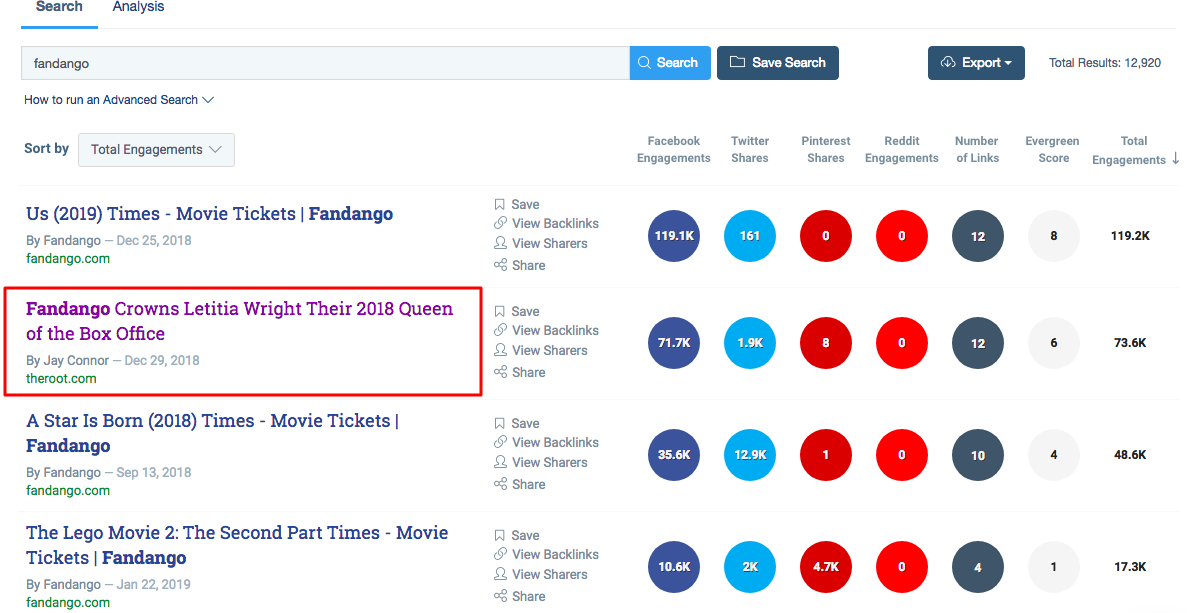
See how Fandango accomplished this in late 2018 by releasing a graphic of the highest earning actors in 2018 based on a report covered by The Root (which gained significant traction, with 85k+ engagements).
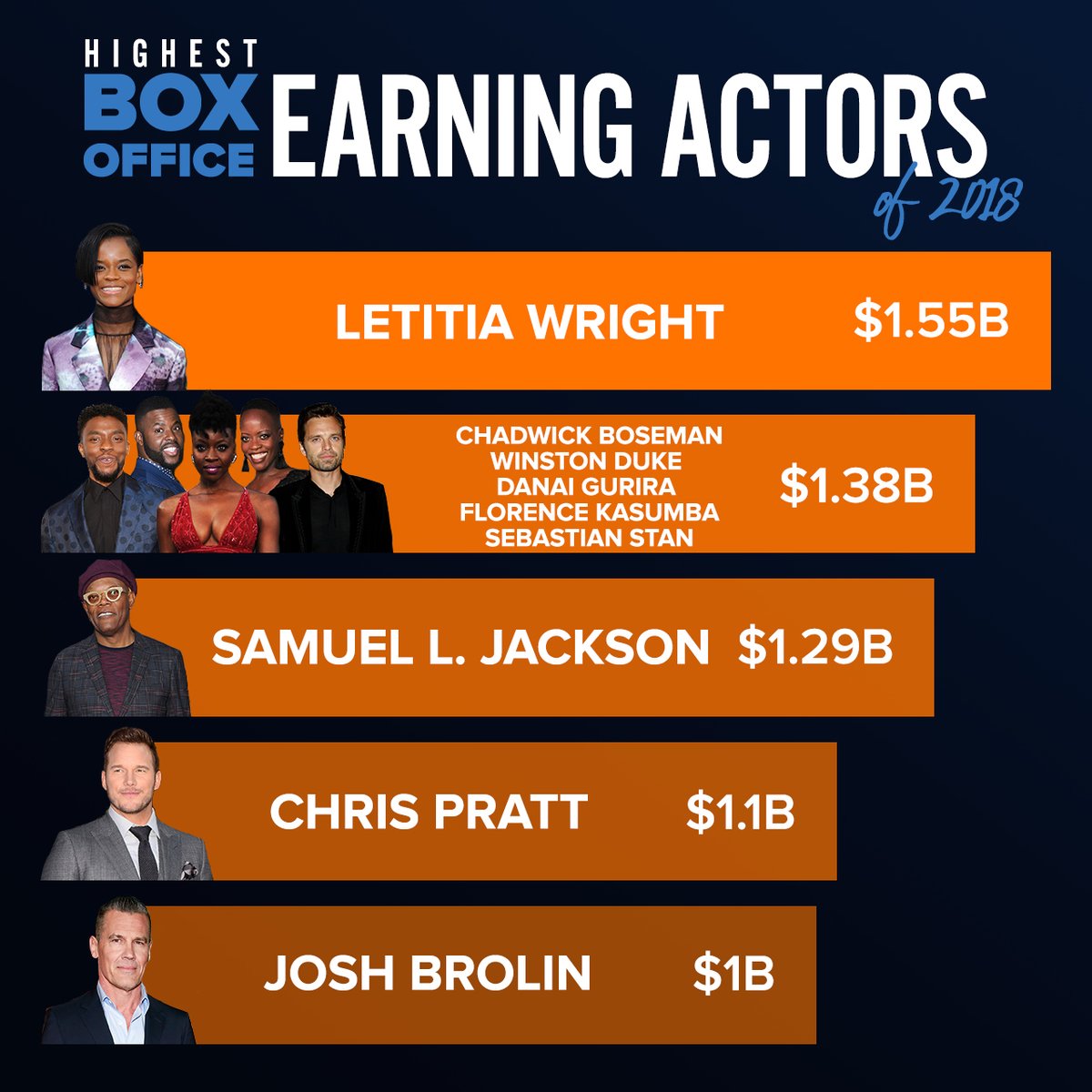
The important thing to note here is that when you review the BuzzSumo results, you see that the rest of their high-performing content featuring their brand name in the title is just showtimes. With this one piece of content, they could reach the same level of visibility as their core offering that they heavily promote, meaning they potentially get significant amounts of untapped brand exposure.
The effect of that one piece of content can even be reflected in Google search.
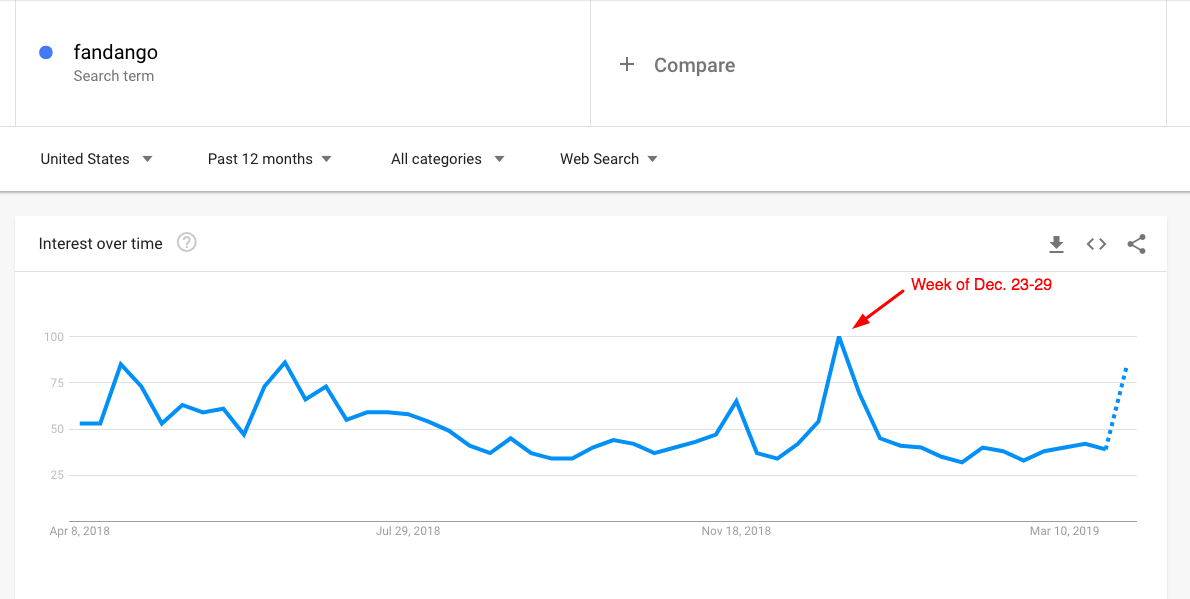
The week that content went live, there was a significant spike in searches for “Fandango.” Now, I can only point out the correlation, since it’s possible something else caused this increase. At the very least, it’s an interesting coincidence.
The Impact of Data Storytelling
We see how data storytelling can surpass many other types of content in terms of links, social shares, and more. But there are three other significant benefits that we shouldn’t overlooked.
1. Your brand is seen as an authority.
Whenever you release reports, studies, or any data-backed content, you’re positioning your brand as an entity that has proficiency about the topic and has access to pertinent information around that topic.
Stating the message isn’t simply enough. With consumers and audience ceaseless lost of trust in media and businesses, you have to back up your statements and reports with objective facts.
It’s not just a blip on the radar, either. If the study is compelling enough, it can gain a momentum that further propels your brand into a place of authority. The more often it’s cited, the more people associate you as being the expert.
I’ve seen this first hand. Back in 2015, Fractl created a research-focused content campaign for my client, Travelmath.com, in which we had a team test how germy different areas of airplanes were. It exploded in popularity then, so while writing this piece, I decided I’d check up on it to see if it was still receiving any love:
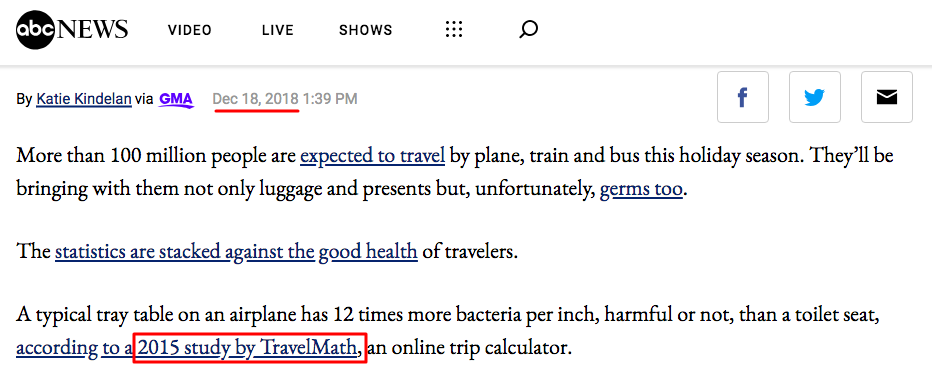

There are multiple examples of how a 2015 study has been cited as recently as March 2019! My guess is that the standard press release can’t maintain this level of interest over time, which is why data-driven content’s benefits can compound in ways we’re not even fully measuring yet.
2. You have much more flexibility in publishing and promoting engaging content.
It’s not often that your company will release a prominent new feature, launch a new product or get a new CEO. When things are standard operating procedure, being able to work on other content initiatives that aren’t tied to the logistics of your organization or new announcements is a huge advantage.
Through data journalism and PR, you can schedule out times to come up with ideation, analyze data sets and produce visual assets all throughout the year. That’ll put you in the press consistently, and you’ll be exposed to a larger audience.
At Fractl, we create and promote campaigns on a regular basis so they benefit from more consistent presence in online conversations while gaining a steady, ongoing stream of backlinks, as well.
3. You learn much more about your target audience in the process.

Press releases tend to come from within. You’re reporting about what you’re up to, and it’s true that this impacts your customers, your potential customers, and sometimes your industry.
But it’s also an important practice to remember that you’re here for your customers/clients. You need to check in about what they care about, what they’re curious about, and what they’re worried about.
To create great data-driven content, you have to investigate these questions. Success only comes if you’re providing value, and it’s through this research and brainstorming that you’re able to better understand your target audience.
I always recommend people use tools like Answer the Public and BuzzSumo’s Question Analyzer tool to start their research and get a sense of what their potential clients and customers want to know.
Conclusion
Don’t give up on press releases altogether; they certainly have their place. But don’t rely on them entirely, either.
Creating high-quality, useful, data-driven content can not only supplement your other content marketing efforts—it can strengthen (or even carry) your entire strategy. When you build brand exposure and strong backlinks, you’re strengthening the foundation of your site’s authority and thus heightening all of the other marketing work you’re doing.
And when your content is trustworthy, interesting, and valuable to readers, you really can’t lose.
Contently helps global enterprise brands create engaging and accountable content for their most important audiences. For more information, visit our resource center or contact a content expert.
Get better at your job right now.
Read our monthly newsletter to master content marketing. It’s made for marketers, creators, and everyone in between.




